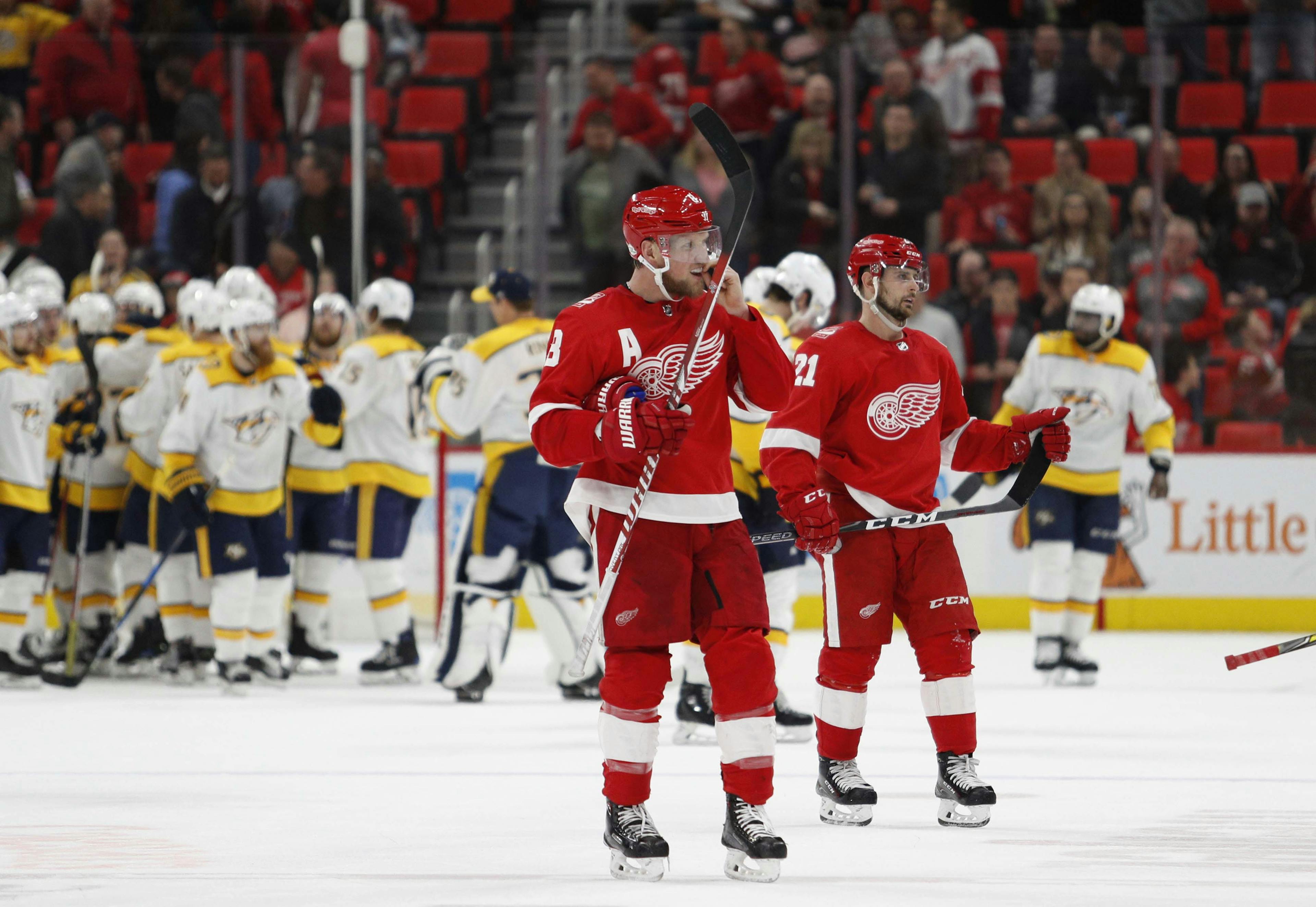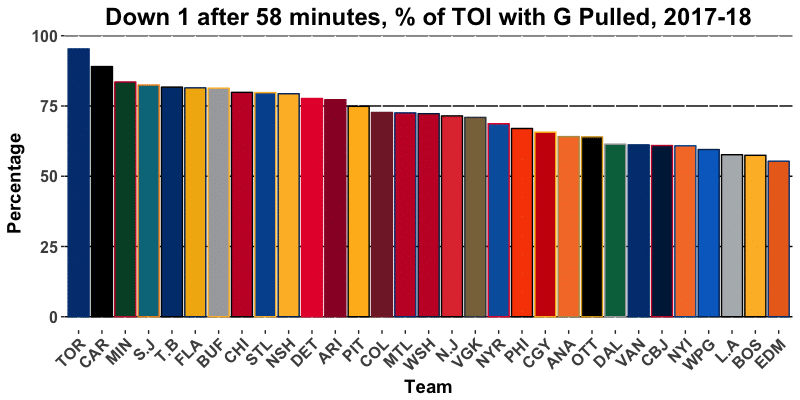Red Wings Lack Of Late-Game Pressure Costing Them Points

By Cameron Kuom
6 years agoIn the midst of a nine game losing skid — the longest in franchise history since the 1985-86 season — the Red Wings have hit a wall. They are truly fallin’ for Dahlin, currently having the fourth best odds at winning the draft lottery. However, they’ve been in close games, with five contests in the current losing streak being a one goal game at some point in the final three minutes.

There are certain elements of their game that are costing them points. They’re shooting themselves in the foot with simple plays being complicated in the closing minutes. Their inability to sustain pressure in the offensive zone has been killing them. To establish offensive zone pressure, they need to control the neutral zone to get zone entries, clean or not. The below clip from their game against the Winnipeg Jets shows just how disastrous their neutral zone play can be.
A lot went wrong here. Starting with Kronwall not feeding AA the puck will all that space (which he can take advantage of). Then Larkin choosing to pass to AA with little room, instead of getting the puck in deep with a two man fore-check, which lead to another five seconds of circling around, only to dump it in and be severely outnumbered because of a bad line-change. It is attention to detail like this that the Wings need, or else they will have to rely on their lack of talent. Which is exactly what happened, as they had to rely on Kronwall threading a pass through two defenders. An important note: the Wings had an offensive zone faceoff with 2:34 left and opted not to pull the goalie (this will be important later).
Even when they do gain zone entry, there are still instances where they put little pressure on their opponents. This next clip, depicts that pretty well:
What sticks out here? No shots on goal, and one shot attempt. The entire time they were battling for the puck down-low. The only aggressive play made was a pinch by Mike Green, but the rest was just some cycling around. The problem here is it’s 5-on-5, as Jeff Blashill decided not to pull the goalie during this sequence. The extra man would have put another body in the battles, and spread out their defense more. There was 2:30 left when they gained zone entry, and didn’t lose possession until there was 1:45 left. What then ensued was the remaining players were tired after almost a minute of battling, and allowed the Kings a clean zone entry, and eventually a goal. Not pulling the goalie was their kryptonite, in both the Kings and Jets games, as they both had golden opportunities to get the extra man on the ice.
The solution to this? Pull the goalie! Oh wait… they failed at that too. *yells into pillow* “You had one job!”
In the two above clips, Blashill’s decision making and inconsistency were on full display. In the first two clips, Blashill had the chance to pull his goalie, while his team had offensive possession (one being an offensive zone faceoff). However, in the two clips where he does pull the goalie, he does it during transition, as the Wings have yet to establish control of the puck. The bad timing to pull the net-minder did not go well, as the Wings lost possession, and were unable to put pressure on the back-check, allowing an easy empty-net goal within fifteen seconds of pulling the goalie.
All of this makes it hard to get a grasp on Blashill, because he is generally aggressive with pulling the goalie.

Detroit is the eleventh most aggressive team with pulling the goalie, and outside of this latest stretch, have rarely given up empty-net goals. Blashill needs to get back to his roots, because his mix of conservative and desperate pulls is not working. With that, Detroit needs to have more attention detail, and not rely on their skill to get offensive zone pressure.
Obviously its easier said than done, as I’m sitting here on a computer analyzing the play ten times, they are dealing with it at full speed. But some better coaching decisions and some scheme changes, and they may fare better late in games.
All videos courtesy of NHL.com
Recent articles from Cameron Kuom





